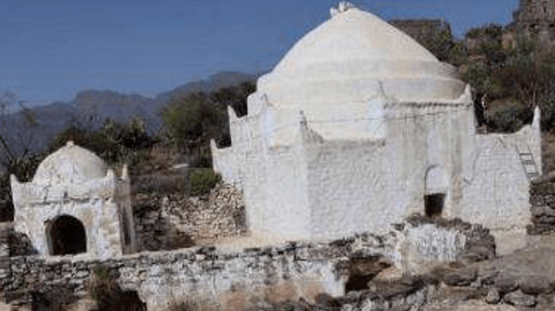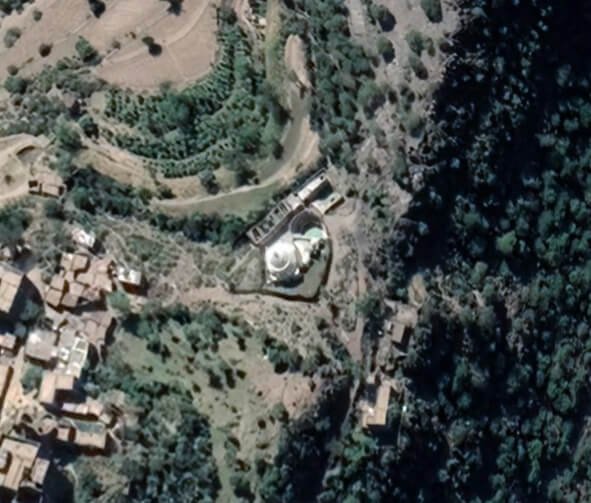
Al-Hushaybarī Dome – ‘Ans – Dhamār
قبة الحشيبري- عنس
Monument description
It is a Mosque and a historical School located in the village of Al-Shuaiba, one of the villages of the Maghreb Anas District in the Dhamar
Governorate.

Architectural and cultural value
Construction style and built date: The Dome is considered a distinct form of domed mausoleum that appeared in the late tenth century AH. Although there is no specific date of construction, it is assumed that it was built after the death (in Ahmed Abaad, India) of Sufi Shiekh Jamal Aldin Muhammed bin Ali Alhushaibari in 1000AH. The Mosque and the School were built by his family to commemorate his memory. This monument remained an active center for teaching religious sciences and Sufism. Successive elite of scholars of this family who inherited knowledge from their ancestors continued to teach there.
Components of the Mosque: Mosque, Mausoleum, School. Two ponds to the east and west. In addition to Matahir (Ablution Unit) and few graves. The monument area is 674m2.
- Justifications for intervention:
-
1. Stopping the serious deterioration of the main Dome of the Mausoleum, whose components have begun to fall off
2. Reconstruction of the School, whose ceilings and walls have been severely damaged
3. Restoration of the rest of the facilities and the fence, which are almost collapsing
4. Building service facilities within the monument. - Monument conditions and treatment:
- The current state of the dome shows serious damages.
- 1. Leakage of rain water, leading to damage to the structure of the main dome, falling off the internal cladding, and subsequent inappropriate treatments with cement.
- Treatment: Urgent restoration for the dome (the Prayer Hall) to avoid the imminent fall, and demolition of the stone body of the dome; lower the level of the northern side which is elevated from the building.
- 2. Collapse of the School building, consisting of two classrooms; falling off of the ceilings of the Al-Mamala (Al-Faqih Chamber) and Matahir (Ablution Unit)
- Treatment: Restoring the ceilings and walls of the classrooms.
- 3. Fading, disappearance and distortion of the interior decorations as a result of inappropriate plaster renewal and tampering with aesthetic components, writings and inscriptions.
- Treatment: Restoration works on the interior decoration including: exploring, cleaning and restoring employing the expertise of a restoration expert.
- 4. Damage to the walls of ponds and external wall.
- Treatment: Restoring the courtyard walls, the walls of the ponds and the rest of the facilities.

Countries





